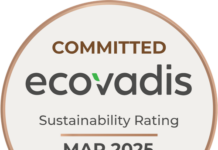By Ankush Jain, Managing Director, Bullmen Realty
New Delhi, March 24, 2018: ‘Roti, KapdaaurMakaan’ have been the basic necessities of life. However, a large number of people are not able to realize their dream ofowning a home. Therefore, to fulfil the goal of housing for everyone, the Pradhan Mantri Awas Yojana (PMAY) was envisagedin 2015. It is a mission by the government to realise the age-old aspiration of housing for all citizens of India.
Housing for all strongly depends on the availability of affordable homes for each and every section of the population including the Lower Income Groups (LIG), Middle Income Group (MIG)as well as Economically Weaker Sections (EWS) of the population in the rural and urban centres of India.
The scheme will be completed in three phases over few years. These are April 2015-March 2017, April 2017-March 2019 and April 2019-March 2022. As can be assessed, we are currently in the second phase of the mission.
There are specific boosters planned by the present government to make the ‘Housing for All Scheme’ successful by 2022, which coincides with 75years of Independent India.
Theseboosters are planned to catalysehousing initiatives at both the public and private sector fronts:
- For a loan amount up to Rs 6 lakh, interest subsidies on home loans under CLSS or Credit Linked Subsidy Scheme for LIGand EWS categories of the population for a maximum loan tenure of 20 years or lesser is available at the rate of 6.5 per cent.
- For a loan amount of up to Rs 9 lakh, interest subsidies on home loans under CLSS for Middle Income Groups at 4 per cent and for a loan amount of up to Rs 12 lakh, an interest subsidy at 3 per cent for a loan tenure of 20 years or lesser can be availed.
- Under CLSS, the carpet area allowed is 60 square meters for LIG and 30 square meters for EWS. There has been a recent increase in the carpet area allowed under CLSS for MIG-I and MIG II to 120 and 150 square meters respectively.
- The focus of many real estate developers and agents including developers, state-controlled and private builders is on building affordable homes.
- Housing finance companies and private and nationalised banks have reduced the rate of interest on housing-related loan products and have launched attractive schemes for home loans.
- Miscellaneous fee and processing fee has been completely done away with by housing finance companies and banks offering home loans.
- Public-Private Partnership (PPP) has been invoked to build affordable homes and also offer rehabilitation of slum-dwellers.
- The focus has been to build 100 citizen-friendly smart cities under the Smart Cities Mission which is currently underway in phases.
- The focus has been to decentralise the process of Housing For All by involving the state governments as well.
- In financial year 2017-18 union budget, affordable housing has been granted infrastructure status by the government.
- There is a massive push to e-governance and establishment of Real Estate Regulatory Authorities under the aegis of the Real Estate Regulatory Act (RERA) to bring transparency into the system.
- Optimum use of Floor Space Index (FSI) in affordable housing units.
- Launch of tailored schemes for different segments like PMAY (urban) and PMAY (rural).
RERA has increased the confidence of homebuyers as their interests are protected as agents, promoters and real estate developers are registered with RERA. Also, home loans are being offered at record lowlevelsof interest rates across the country along with the push to Smart Cities Mission which is making the availability of homes simpler in suburban areas where such ready-for-possession homes exist. To top it off, the government recently slashed the GST rates on affordable housing from 12% to 8%. With such a holistic action plan,‘Housing for All by 2022’ is slated to redefine the housing sector in India and put the country on a sustained path of growth and development.
Corporate Comm India(CCI Newswire)



























